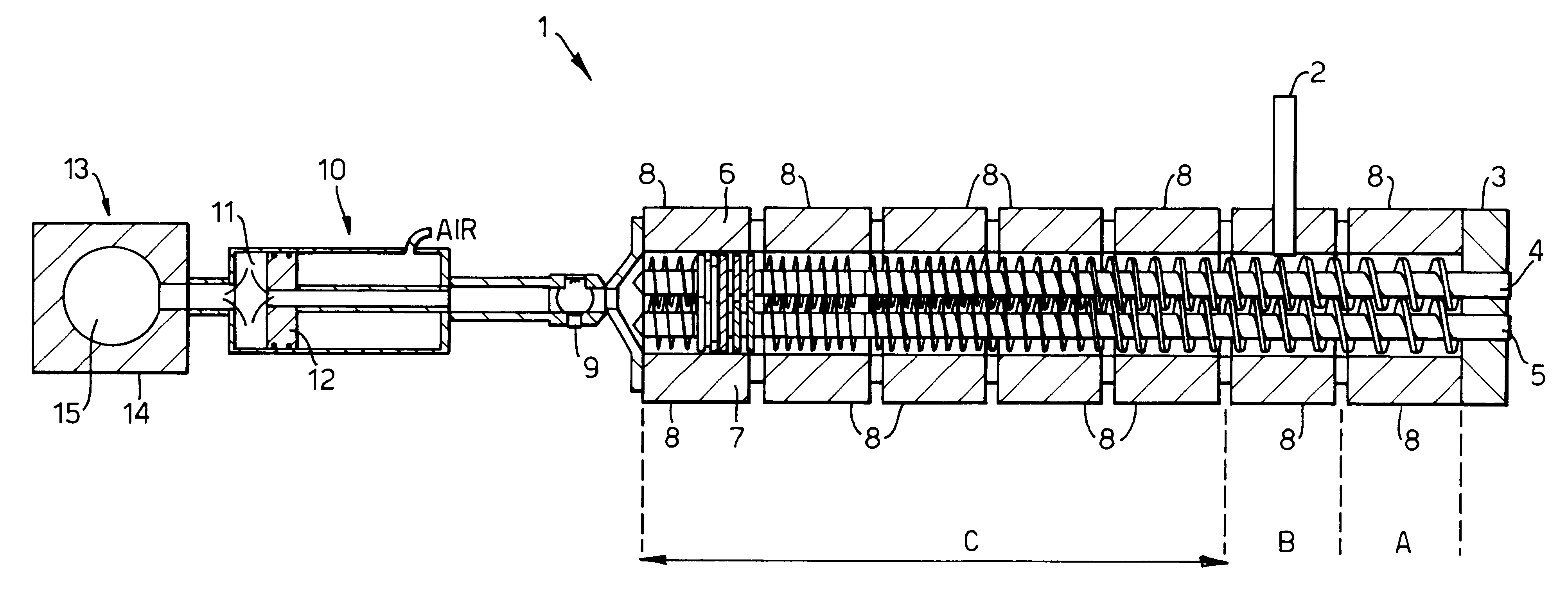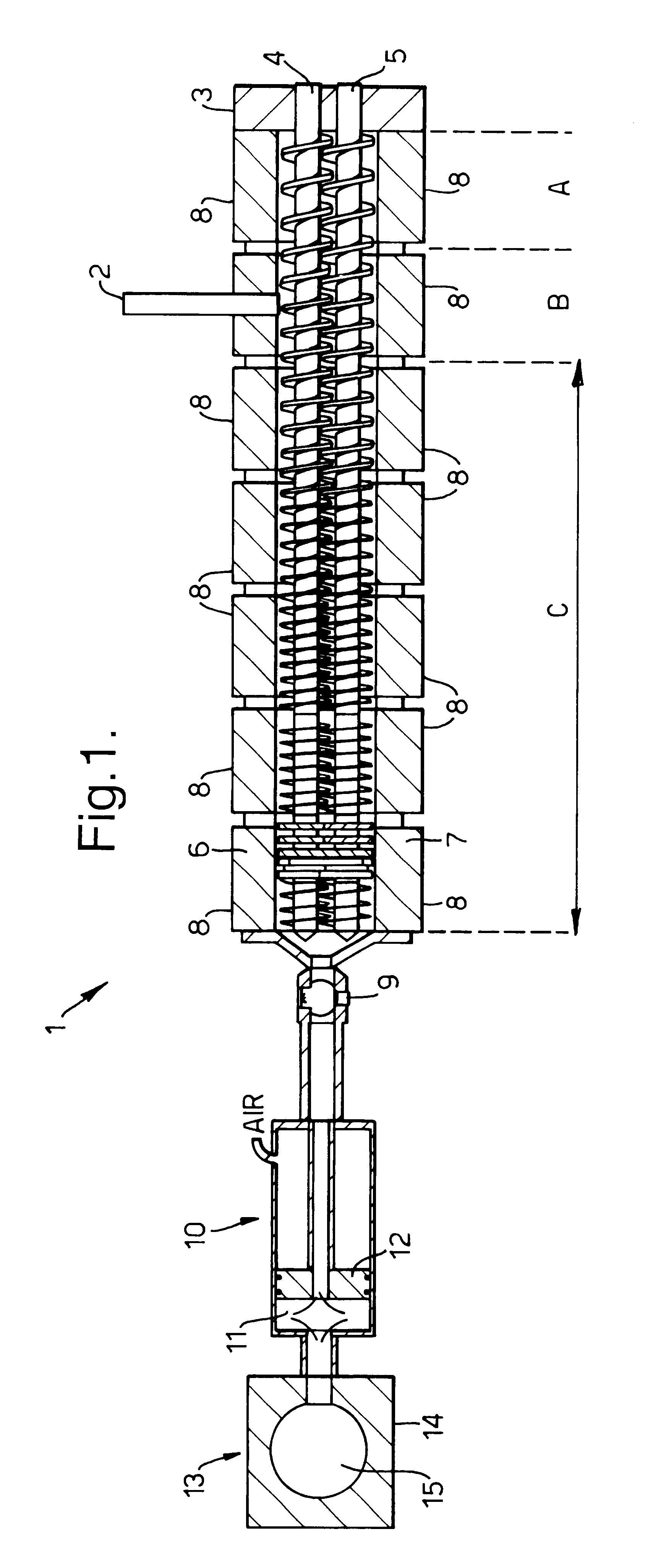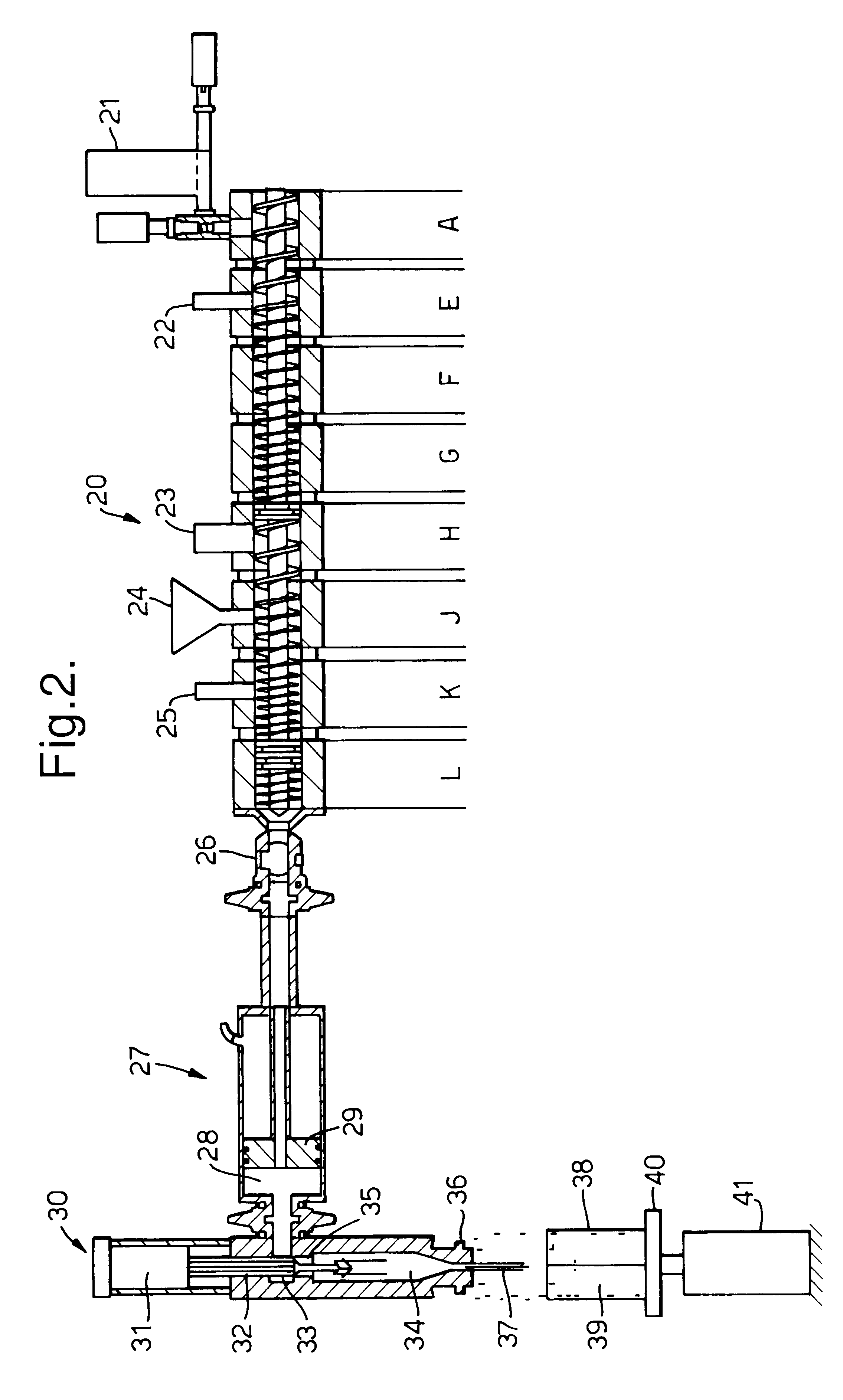Process and apparatus for the production of a deodorant or antiperspirant composition
a technology of antiperspirant and composition, applied in the field of deodorant or antiperspirant sticks, can solve the problems of increasing the overall energy consumption of the process, affecting the incorporation of heat-sensitive constituents, and needing to mask rancid odours
- Summary
- Abstract
- Description
- Claims
- Application Information
AI Technical Summary
Benefits of technology
Problems solved by technology
Method used
Image
Examples
example 1
In Example 1, antiperspirant sticks of Formulation A summarised below were prepared employing apparatus according to FIG. 1, a Betol co-rotating twin screw extruder, having 40 mm diameter screws and eight temperature control zones leading via a connection valve to piston-type injection unit in which the connection valve and injection head were also temperature controlled. In this example, the extruder acted to transport the fluid antiperspirant composition to the injection unit.
A batch of a composition within Formulation A was prepared in conventional equipment to produce a solid mass and subsequently melted in a conventional stirred heating jacketed vessel. It was maintained at a temperature of approximately 60 to 65.degree. C. and fed in the form of a fluid mass via a metering pump into the Betol extruder. Zone A was controlled to about 30.degree. C., in order to generate a solid block of material to minimise loss of the composition. In zone B of the extruder, the temperature was ...
example 2
In this Example, apparatus in accordance with FIG. 1 and substantially as described in Example 1, except that the twin screws each had a diameter of 30 mm, was employed to produce sticks from a composition within Formulation B. Formulation B was the same as Formulation A, except that the antiperspirant active was an Al-Zr antiperspirant active which had a larger average particle size than the active in Formulation A, and which was more prone to sedimentation.
The composition was injected into the barrels at a temperature selected in the range of 44 to 48.5.degree. C. The products after they had cooled to ambient temperature were assessed as to their surface appearance, hardness and sedimentation of active. It was found that the sticks having the best properties were those which were injected at a temperature of from 46 to 48.5.degree. C., compared with a regular set temperature of about 49.degree. C., in that they exhibited acceptable resistance to sedimentation and showed good surfa...
example 3
In this Example, a composition within Formulation C as shown below was in-line compounded and injected into either barrels or moulds to form sticks using the process described below.
In this Example, sticks were made employing apparatus according to FIG. 2 and comprising a Werner & Pfleiderer co-rotating twin screw extruder having a plurality of temperature control zones, feeding an injection moulding apparatus having a low shear in-line injection head. The extruder had 30 mm diameter screws rotating at rates controlled within the range 30 to 200 rpm. In this Example, the extruder acted not only to transport the composition to the injection unit, but also as a continuous in-line compounder.
The composition within Formulation C above was compounded by feeding the constituents into the screw extruder in the following order:
The waxes were introduced via a volume feeder into zone A, then the silicone fluid and the emollient oil were pumped in via metered pumps into zone E. Zone A was main...
PUM
| Property | Measurement | Unit |
|---|---|---|
| Temperature | aaaaa | aaaaa |
| Pressure | aaaaa | aaaaa |
| Pressure | aaaaa | aaaaa |
Abstract
Description
Claims
Application Information
 Login to View More
Login to View More - R&D
- Intellectual Property
- Life Sciences
- Materials
- Tech Scout
- Unparalleled Data Quality
- Higher Quality Content
- 60% Fewer Hallucinations
Browse by: Latest US Patents, China's latest patents, Technical Efficacy Thesaurus, Application Domain, Technology Topic, Popular Technical Reports.
© 2025 PatSnap. All rights reserved.Legal|Privacy policy|Modern Slavery Act Transparency Statement|Sitemap|About US| Contact US: help@patsnap.com



